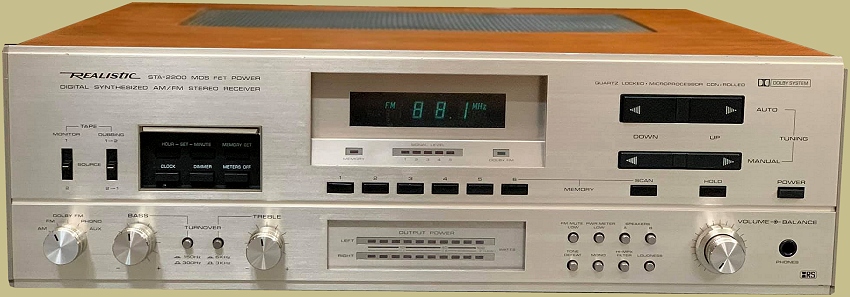
The Realistic STA-2200 receiver debuted in 1980 at a retail price of $599.95. It was sold by Radio Shack both in stores and via mail order. While it was designed in the US, it was made Tandy in South Korea (Radio Shack was a division of Tandy at the time). Some feel it is the best receiver ever made by Realistic because the engineers focused on sound quality rather than power output which was the rage at the time. It’s very well built and performs at a high level. It was also one of the early digital receivers.
Other Realistic receiver models that were available at Radio Shack at the time include:
- STA-2100D – $699.95
- STA-2000D – $499.95
- STA-95 – $399.95
- STA-800 – $319 95
- STA-7 – $179.95
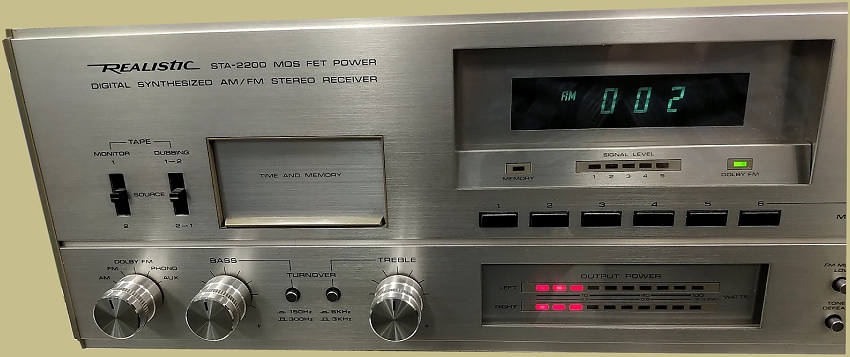
Front Panel
The STA-2200 has a large digital display that shows the station it is tuned to in clear increments. FM frequencies are shown in 200 kHz steps, and AM stations are tuned in 10 kHz steps. When you choose options other than AM or FM, the display transforms into a digital clock. Even while listening to the radio, you can switch the display back to show the time by pressing a button hidden behind a small sliding door to the left of the display area.
There are additional buttons to set the digital clock’s hour and minute, adjust the display brightness, turn off power and signal strength indicators, and activate the station memory feature.

Below the display there are 6 preset station buttons that are programmable for 12 total stations – 6 for FM and 6 for AM. To set up this memory, you press the MEMORY SET button below a cover on the front. This activates the memory and a light shows it’s ready. Then, you press one of the preset buttons, and the receiver remembers that station. Even if the power goes out, it won’t forget them if you put a 9-volt battery in a compartment on the back.
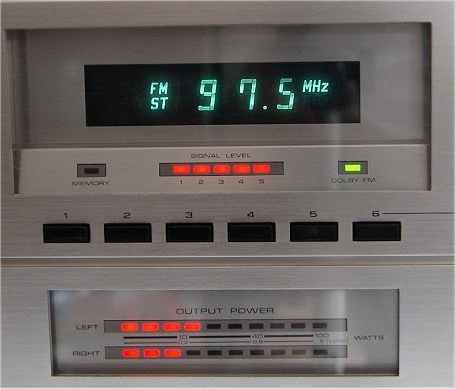
Red LEDs display power output in watts, and there are controls for loudness, bass, treble, balance, and stereo/mono sound.
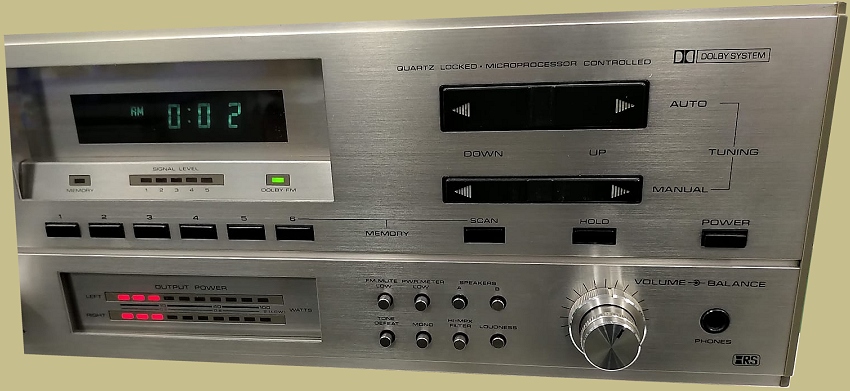
FM Tuner
Tuning is made simple with electronic scanning that automatically finds and stops on the next clear station up or down the band. Or, you can just hold the manual tuning bar down and let off when you reach the desired station. The scan function previews each preset station for 5 seconds so you can quickly sample the stations.
In the front-end the STA-2200 uses a dual-gate MOSFET RF amplifier and employs varactor diode tuning controlled by a microprocessor. The FM IF section uses 3 ICs, has 3 linear-phase ceramic filters, and uses quadrature detector to recover composite audio signal. The stereo decoder uses a phase-locked loop stereo MPX decoder CMOS IC. The receiver uses a quartz crystal circuit to lock in stations precisely without drift.
Here’s what High Fidelity magazine said about the tuner in the STA-2200:
“The tuner measurements are all top-notch. Sensitivity, capture ratio, and the like are all what you’d expect from a separate tuner, and separation is nothing short of exceptional. But the LED signal -strength indicator is, as usual for such devices, useless for any practical purpose we can think of.”
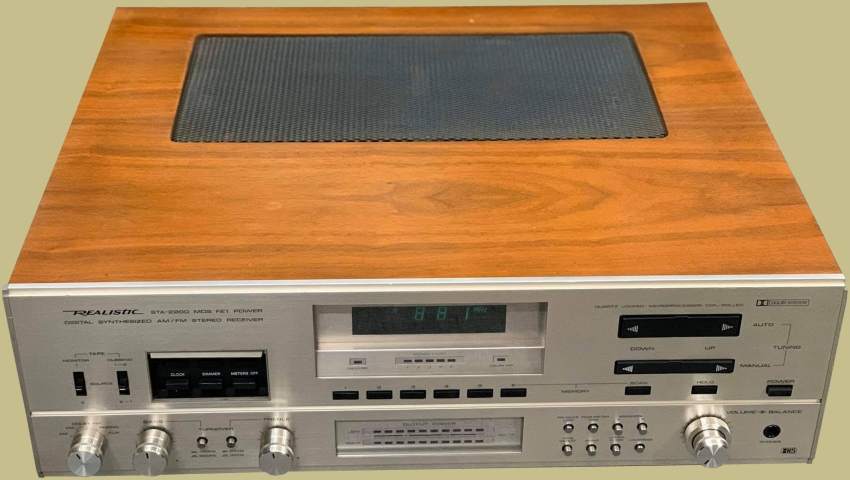
Features
- Frequency synthesized tuner allows electronic scanning of entire FM/AM bands and auto-tuning to stations
- Fluorescent display shows frequency readout
- Memory stores 6 FM and 6 AM presets for one-touch tuning
- Scan function previews preset stations in memory
- Quartz crystal circuit provides drift-free tuning
- Two-step FM muting for local/distant station reception
- Buttons for tone defeat, mono, loudness, speaker switching
- Dual tape dubbing and monitoring
- Bass and treble controls with adjustable crossover points
- Detented dual volume/balance knobs
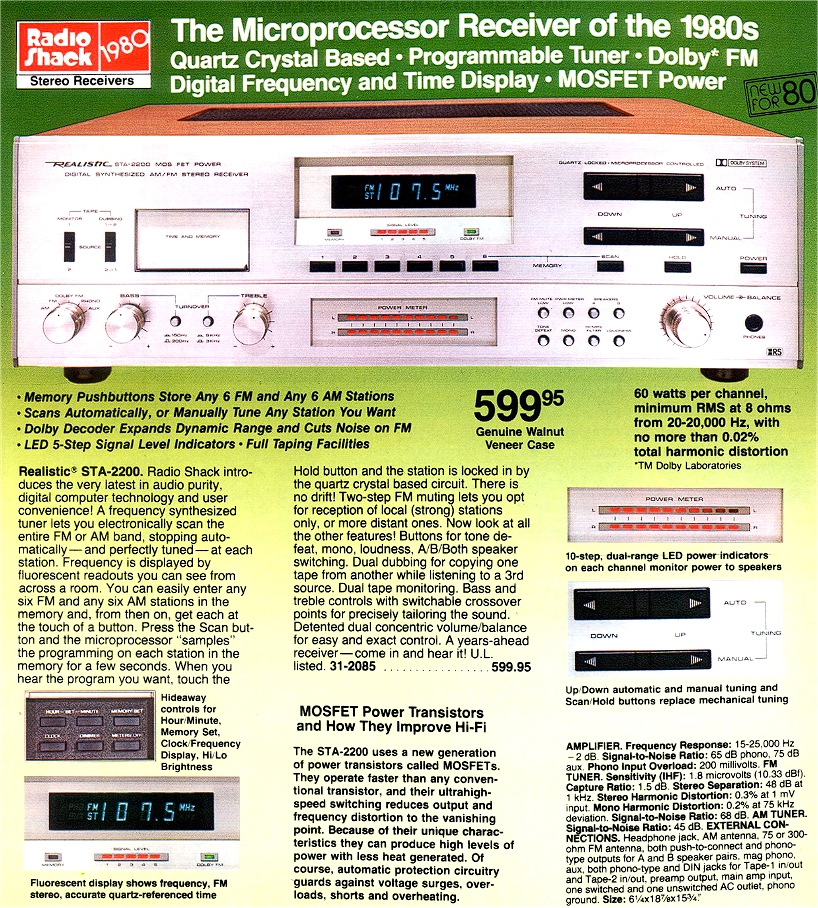
Consumers, at the time, could get an entire audio package from Radio Shack. The package included the STA-2200, a LAB-400 turntable, a pair of Mach One speakers, an SCT-3000 cassette deck, and some LV-10 headphones for just $1699. That was probably a substantial sum of money back in 1980.

Specifications

Amplifier
The Realistic STA-2200 produces 60 watts per channel into 8 ohms with a rated total harmonic distortion of 0.02%. The amplifier utilizes MOSFETs in the power amp section and has automatic protection circuits to protect against voltage surges, overloads, speaker shorts and thermal overheating.
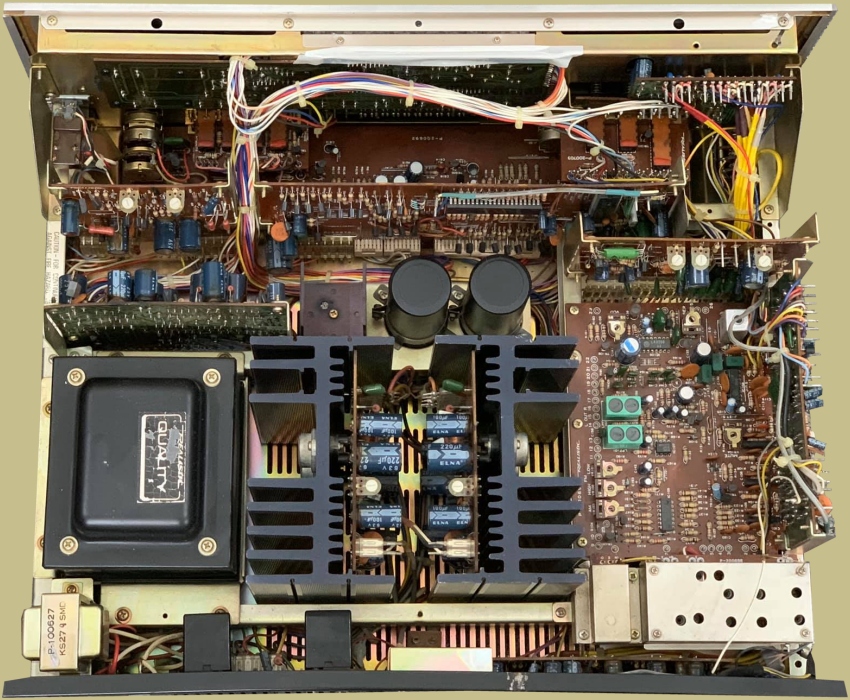
Reviews
I’m blown away with the bass control, clarity of all higher frequencies, and a transparency in the midrange. This is a GREAT sounding unit.
Definitely the best sounding receiver built by anyone in 1980 with it’s MOS-FET output design.
It is a great piece of MOSFET power and the dynamics are amazing.
Rear Panel
The back of the STA-2200 receiver contains a number of input and output connections. On the left are a fuse holder, switched and unswitched power outlets to plug in other devices, and spring-loaded speaker terminals of different colors to connect up to two speaker systems. There are also RCA speaker outputs which is a nice touch. Two sets of jacks allow tape monitor and dubbing between the receiver and two tape decks. DIN connectors provide additional connectivity. Preamp outputs and main amp inputs are linked by removable jumpers for separate access. To avoid hum, the phono and auxiliary inputs are located far from the AC circuits at the opposite end of the rear panel, along with a chassis ground terminal. AM/FM antenna terminals and the AM ferrite antenna are at the upper right.

The Realistic STA-2200 is a very good receiver. The tuner is good. The amplifier is under rated at 60 wpc and the sound is nice and warm probably due to the quality Hitachi MOSFET output transistors they used. If you don’t need a ton of power and don’t care much about brand names then this receiver is a great choice. The Realistic brand has been overlooked by many but they made good equipment and the STA-2200 may be their best receiver ever.
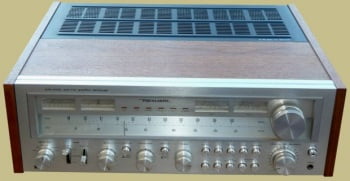
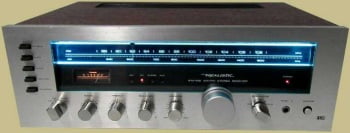
The STA-2200 has the beefiest heatsinks I’ve ever seen, and the receiver is only 60wpc. And it does sound really good.
The review by classicreceivers is accurate.
Keep up the good work.